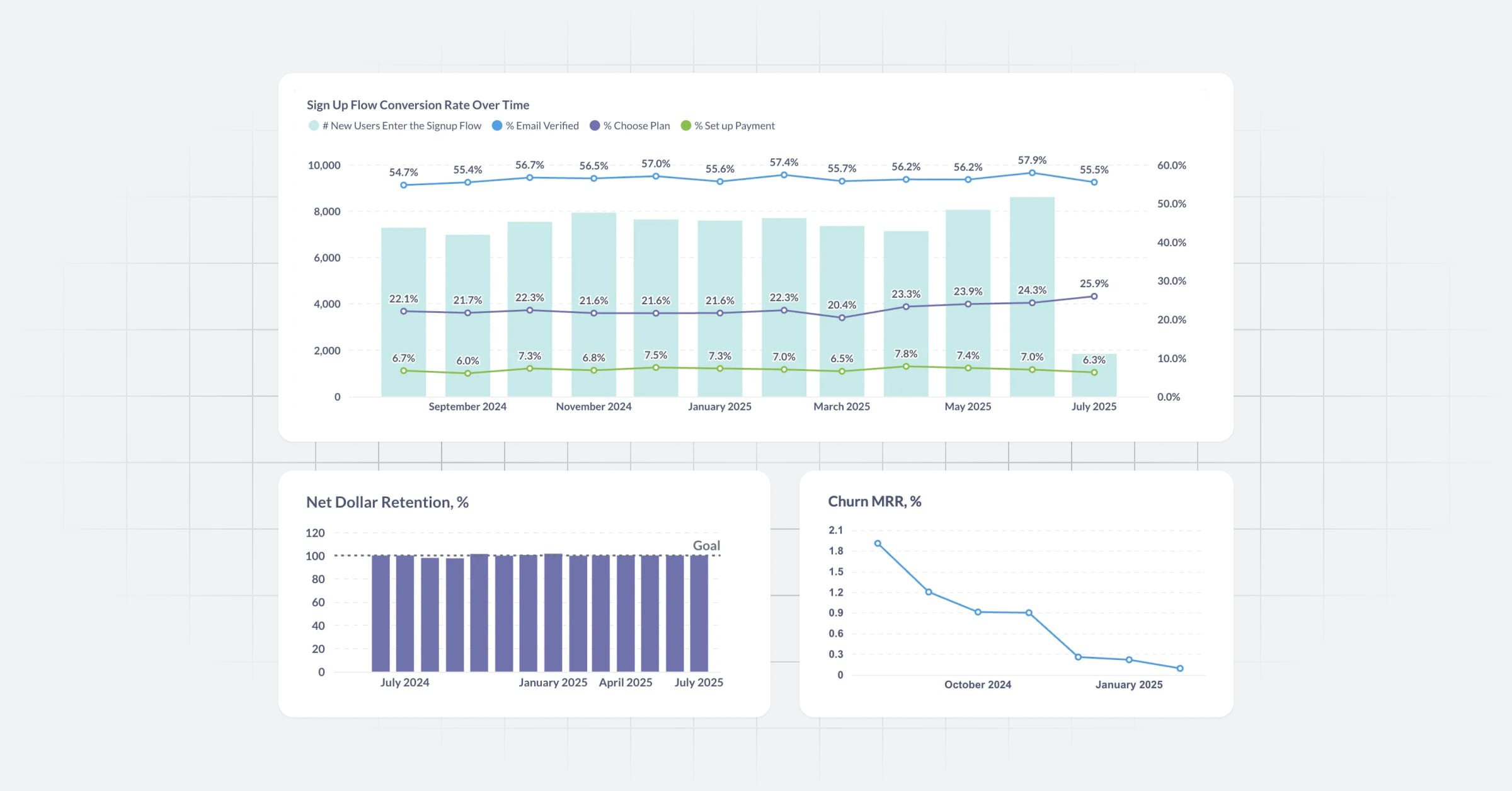Setting up data uploads
This page covers how admins can set up data uploads so people can upload CSVs to your Metabase. For how to upload data once this is set up, check out Uploading data.

Uploading CSV data is best suited for ad hoc analysis of spreadsheet data. If you have a lot of data, or will need to update or add to that data regularly, we recommend setting up a way to load that data into a database directly, then connecting Metabase to that database.
Managing upload settings
To manage upload settings, admins can hit cmd/ctrl + K and search for “Settings - Uploads”, or click on the gear icon in the upper right and click through Admin settings > Settings > Uploads.
Databases that support uploads
- PostgreSQL
- MySQL
- Redshift
- ClickHouse (only supported on ClickHouse Cloud)
Setting up uploads
There are a few things admins need to do to support CSV uploads:
- Connect to a database using a database user account with write access. This way Metabase will be able to store the uploaded data somewhere.
- Select the database and schema you want to store the uploaded data in.
- (Optional) Specify a prefix for Metabase to prepend to the uploaded tables.
- Add people to a group with view data and create query access to the upload schema database.
Connect to a database using a database user account with write access
To upload data to Metabase, an admin will need to connect your Metabase to a database that supports uploads using a database user account that has write access to that database.
You can also upload data to the Sample Database included with Metabase (an H2 database), though we don’t recommend using the Sample Database for any data that you want to keep around.
For more, check out:
Select the database and schema that you want to store the data in
If Metabase is connected to a database using a database user account with write access, Admins can enable uploads by:
- Clicking on the gear icon in the upper right on the home page and navigating to Admin settings > Settings > Uploads.
- Selecting the database Metabase should use to store the data.
When people upload a CSV to a collection, Metabase will:
- Create a table to store that data in the database and schema that the Admin selected to store uploads.
- Create a model that wraps the uploaded table, and save that model to the collection the person uploaded the CSV data to.
Specify a prefix for Metabase to prepend to the uploaded tables
Admins can optionally specify a string of text to add in front of the table that Metabase creates to store the uploaded data.
Add people to a group with data access to the upload schema
In order to upload CSVs, a person must be in a group with View data access of “Can view” and Create queries of Query builder access or higher to the schema you’ve selected to store your uploaded data. See groups and data permissions.
Note on uploading data to a MySQL database
For speeding up uploads to a MySQL database, we recommend that you set a local_infile to ON. You’ll need to set this local_infile in MySQL, not Metabase. The command-line format is --local-infile=ON.
If local_infile is disabled (set to OFF), Metabase will automatically fall back to uploading CSVs in a much slower way.
For more context, check out:
- Non-LOCAL Versus LOCAL Operation
- Reference docs for the local_infile variable
- Security Considerations for LOAD LOCAL DATA
Read docs for other versions of Metabase.


